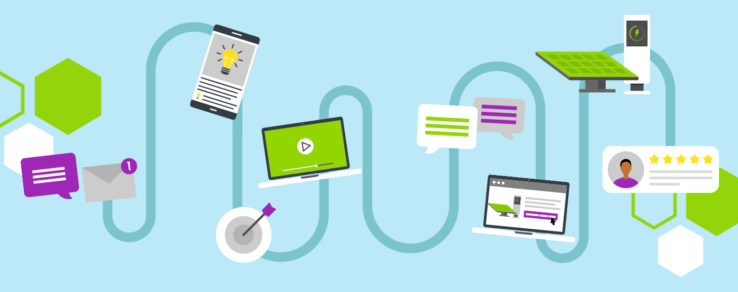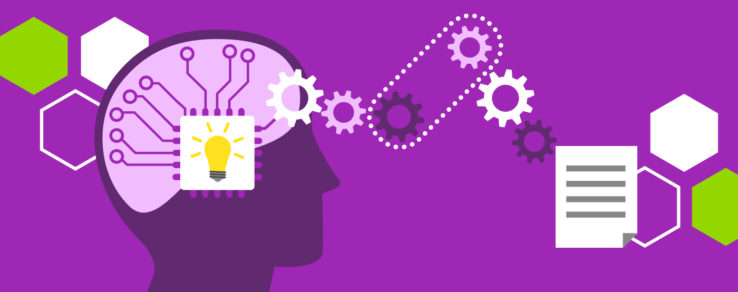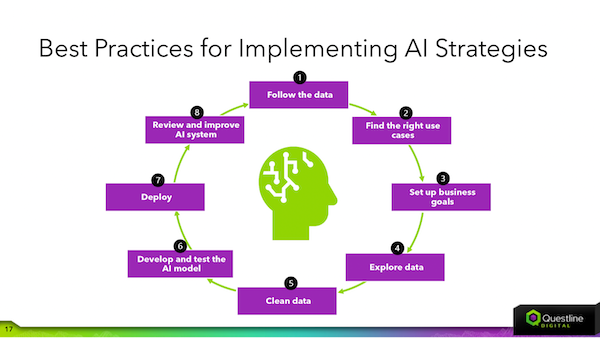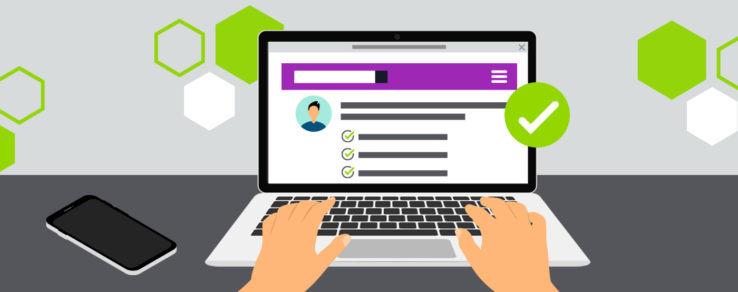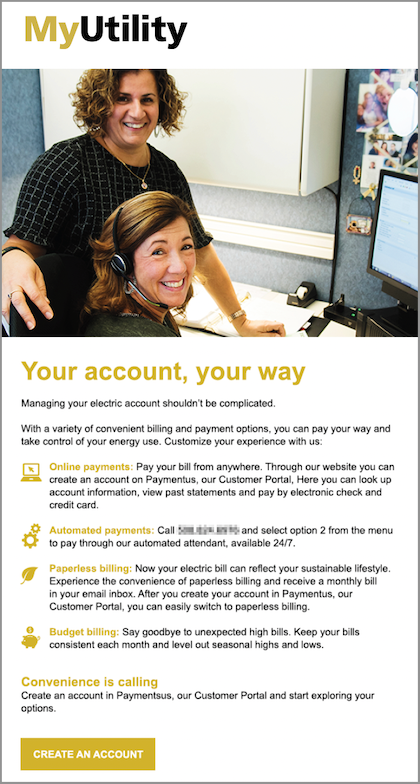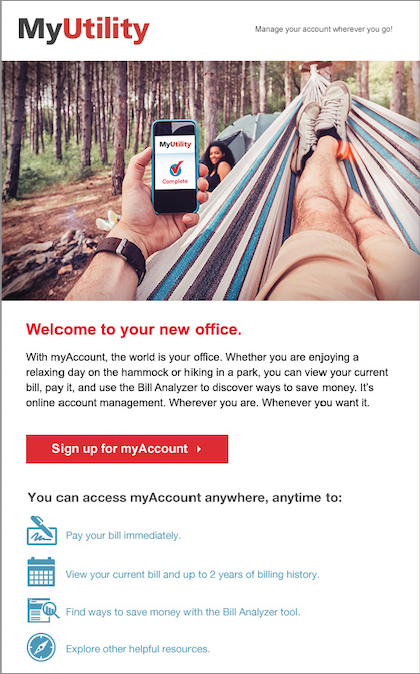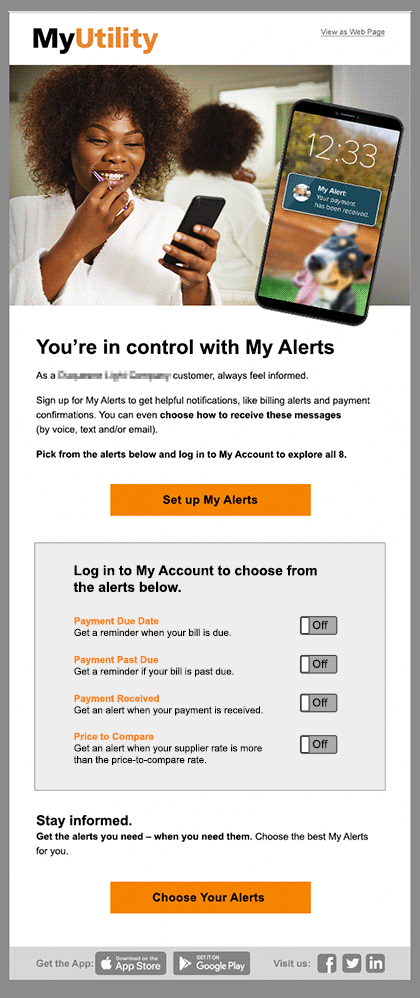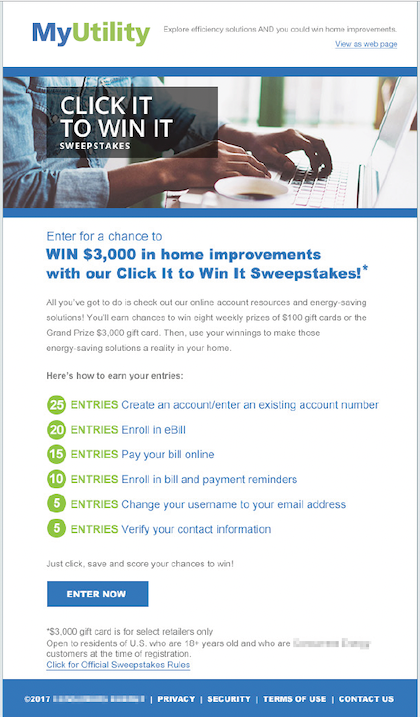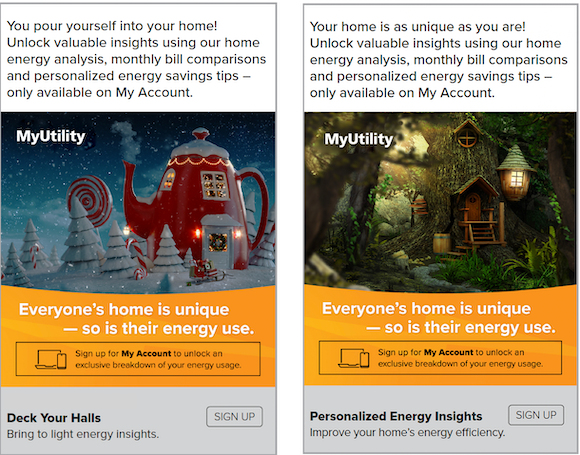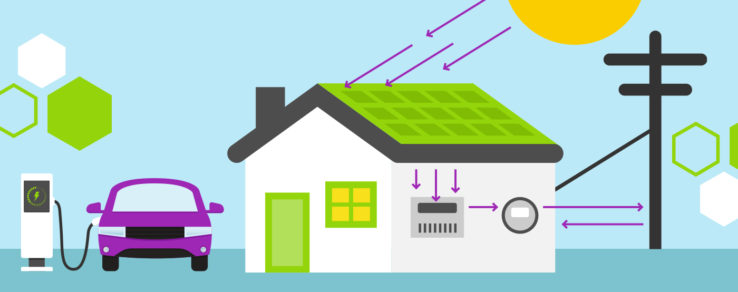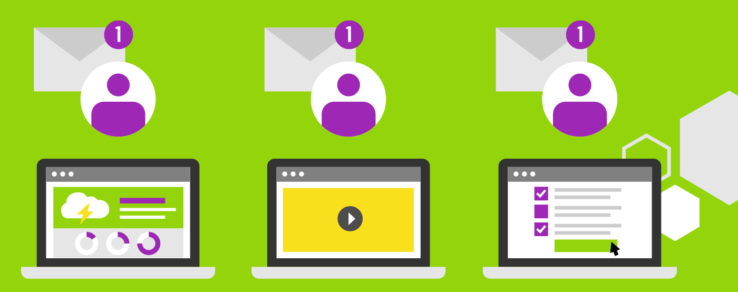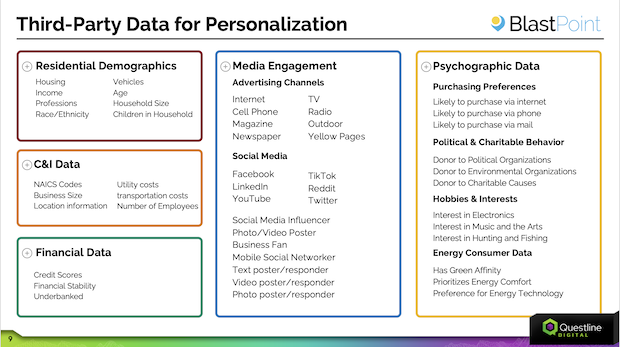As an energy utility, it’s essential that your customers are satisfied — after all, they’re the very lifeblood of your business. And while customer service and energy supply are obviously major factors in retention and loyalty, there’s another powerful component when it comes to delivering an exceptional customer experience: marketing.
Leveraged correctly, marketing can help you reach a greater number of customers than ever before and create relationships built on trust and understanding. Marketing can be an invaluable tool in raising awareness of your services, engaging customers, and creating a positive experience.
Keep reading to discover the top five components of your marketing strategy that can enhance utility customer satisfaction (CSAT).
5 Ways Marketing Can Improve Utility Customer Satisfaction
- Easy-to-use websites and portals
- Personalized communications
- Entertainment
- Helpful content
- Honesty
When customers see that you’re attending to their needs and making it simple for them to take advantage of offers, they leave interactions feeling pleased. You can make it enjoyable to engage with your utility by developing easy-to-use websites, investing in segmented email marketing and sharing content that entertains and improves customers’ daily lives.
“I believe that any effort that connects on a personal level with the consumer improves the customer experience,” said Angela Catton, Manager of Member Relations and Development at Northwest Iowa Power Cooperative (NIPCO). “Marketing efforts that can reinforce how that specific product or service can improve a customer’s life strike a chord and make that experience memorable.”
Easy-to-use websites and portals
Navigating the world of electric utilities can be a daunting task for customers. That’s why an easy-to-use website and customer portal can have a tremendously positive impact on CSAT.
When customers can easily access information about their bills, seamlessly make payments and intuitively find what they are looking for, they feel more empowered and in control of their energy consumption.
An intuitive website can also reduce the need for customers to call in and wait on hold for extended periods. This can lead to a higher level of customer satisfaction as their experience is more efficient and hassle-free.
As a customer of an electric utility, the last thing you want to encounter while trying to navigate a website or customer portal is a clunky interface. Not only can a clunky website be confusing and frustrating, but it can also contribute to a negative perception of the utility as a whole.
What exactly makes for a website that successfully serves the needs of customers? The annual Website Benchmark report published by E Source includes a public ranking of utility sites. In 2021 the report assessed 85 electric and gas utility websites, focusing on four usability components: findability, functionality, content and appearance.
Features of top-ranking utility websites:
- Use responsive design
- Follow standards for accessibility compliance
- Prioritize self-service
- Emphasize security
- Have intuitive navigation
- Provide content that customers need
Common pitfalls for utility websites:
- Slow loading times
- Difficult navigation
- Broken links
- Multi-click pathways to important information
- Or, lack of important information altogether
- Poor design
- Text-heavy or jargon-heavy messaging
Personalized communications
With options such as personalized emails, text messages and mobile app notifications, personalized communications provide a straightforward, cost-effective way for energy utilities to strengthen their customer relationships.
Utilities can personalize communications by understanding their customers’ needs and interests, using data like customer energy use, program participation and content consumption. Con Edison adds insights from third-party companies like Experian Marketing Services to create data-driven customer segments, according to Tony Todesco, Market Research Senior Specialist at the utility.
“Our residential customer database has been appended with these fields so other departments can leverage this data in their analytic platforms as well,” Todesco explained during a webinar.
For example, Con Edison’s outreach team, which hosts events in local neighborhoods, has access to a dashboard that allows them to look up zip code-level statistics when preparing for events. The team can use data, such as language preference or the number of families in an area, to help guide their approach.
Energy utilities have an opportunity to improve customer satisfaction by employing such personalization strategies. By tailoring messages to individual customers, whether through their preferred communication channels or by providing energy-saving advice specific to their household, utilities can build trust and loyalty.
With the rise of technology and data analytics, energy companies can now analyze customer behaviors to create messaging that resonates with their needs.
Entertainment
NIPCO uses virtual reality videos to educate and entertain consumers about the work done by cooperative line workers. Customers can wear headsets and experience a climb to the top of an electric pole through the magic of 360-degree video. The “Lineman 360” experience directly brought the message of line worker safety to the watcher, making it feel personal and memorable.
“These videos immerse the watcher and build empathy with what line workers do daily by experiencing it themselves,” Catton explained. “Lineman 360 improved the consumer relationship because when the lights go out, they remember their experience when they virtually climbed a pole or trimmed a tree and understand that it takes time to restore the power safely.
“By making them ‘virtual line workers,’ they connect personally with their power provider, and consumers become advocates for what they do. When they become advocates, that customer relationship is deepened.”
Helpful content
As an energy utility provider, your customers want more than just reliable service and competitive prices. They also want to feel informed and empowered when it comes to their energy usage.
By creating and sharing helpful content, such as energy-saving tips, tutorials on how to read their bills, appliance efficiency guides, and regulation updates, you can show your customers that you care about their satisfaction beyond just their monthly bill.
“Finding good, digestible, and engaging content that connects with the consumer is gold,” Catton said. “It draws them in and conversationally communicates good advice on how to save money, improve their lives or live greener.”
Questline Digital’s 2023 Energy Utility Benchmarks Report found that residential customers were most engaged with the following pieces of content:
- Myth Busting: Home Energy Use
- Wasting Energy is a Hard Habit to Break
- Listening for Energy Savings in Your Home
- Holiday Season: 12 Days of Energy Savings
- Your Home: The Hidden Costs of Summer
- How to Keep Your Upstairs Cooler This Summer
- You Can Upgrade to a Smart Outlet
- Your Home: Sealing in Savings and Comfort
- Is Your Home Ready for Winter?
- 5 Signs That You Need a New Heating System
Education is also critical for business customers. Baltimore Gas & Electric (BGE) works to inform its business customers about rising costs, state decarbonization efforts and other imperative issues, according to Denise Galambos, Senior Vice President of Customer Operations and Chief Customer Officer.
“We spend a lot of time counseling business customers on energy efficiency programs, grants, and other ways to save on energy costs,” Galambos explained in a recent Utility Dive article. “Maryland is a state that’s very focused on its decarbonization goals, requiring us to continuously educate customers about what’s happening at the legislative level.”
Honesty
As energy costs steadily rise and renewable energy becomes an increasingly prominent topic, the importance of honesty in marketing strategies cannot be understated. Energy utility companies can benefit from being transparent with their customers about the sources of their power, any associated costs and details about their operations.
In turn, customers can make informed decisions about their energy consumption and feel confident that their provider has their best interests at heart. This transparency can lead to improved utility customer satisfaction, as consumers feel like they have a better understanding of what they are paying for and how it impacts the environment.
During a recent webinar, Morgan Kriley, Customer Experience Associate with Duquesne Light Company (DLC), explained that transparency is central to DLC’s focus on being a “Trusted Energy Partner” to its customers.
“The honesty and transparency piece played a major role” in a campaign to inform customers of changing energy rates, Kriley said. DLC created website resources, including a website banner and resource hub, in addition to social media posts and newsletter articles to explain the new rates. Each resource directed customers to a link that explained why energy prices were rising and what customers could do to help lower their costs.
Boost Utility Customer Satisfaction with Positive Experiences
Energy customers have more control than ever before, from choosing their energy providers to using smart home devices to automate energy savings. But along with this control comes a need for information to help customers better understand the impact of these decisions on their energy consumption and costs.
With an effective marketing strategy, utilities can be the trusted sources of that information and ensure that customers can take control of their energy use. By providing easy-to-use websites, personalized communications, entertaining and helpful content, and transparent messaging, energy providers can have a positive impact on the customer experience and achieve higher levels of utility customer satisfaction.
